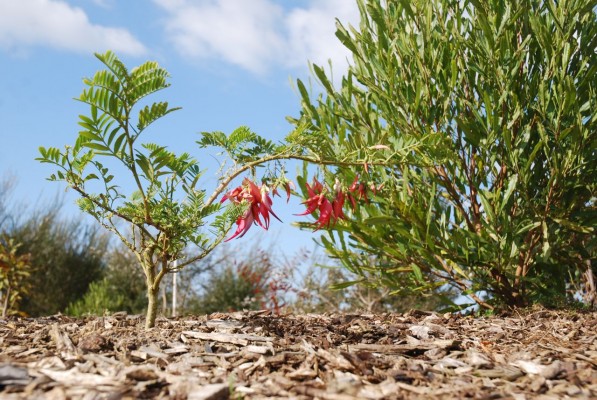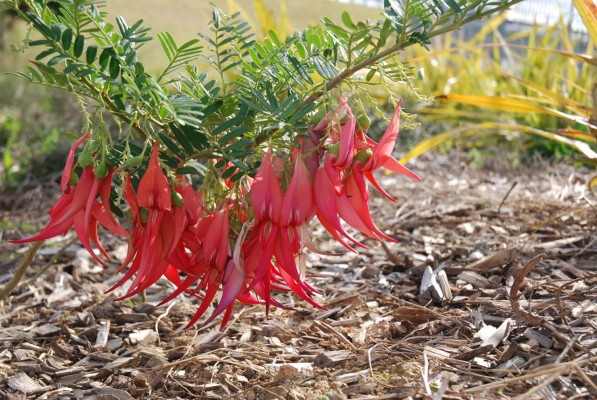Kaka Help Motorway Look Nicer
Sections of the NZ Transport Agency’s busy Auckland motorway network have become an unlikely sanctuary to foster the growth of rare native plants that are being reintroduced into the Auckland region.
The plants – which include kaka-beak, Maori musk, Coromandel koromiko and New Zealand myrtle - are among a total of 155,000 natives planted at a 100 sites to help improve the appearance of the motorways for drivers.
 Rick Gardner, who is leading the botanical makeover on behalf of the NZTA’s Auckland Motorway Alliance says motorways are a perfect place to encourage a plant like the kaka-beak - a favourite with gardeners now facing extinction in the wild.
Rick Gardner, who is leading the botanical makeover on behalf of the NZTA’s Auckland Motorway Alliance says motorways are a perfect place to encourage a plant like the kaka-beak - a favourite with gardeners now facing extinction in the wild.
“Kaka-beak is an absolute dinner favourite for pests like goats and possums and there are reportedly only 5 plants left of one species that are struggling to grow in the wild,” Mr Gardner says.
“Motorways – particularly those islands of land in the middle of the highways - are ideal nurseries because they are pest free, and the plants have a chance to survive. Motorway pollution like fuel fumes is not a problem as long as we get regular rain to give the plants a wash.”
 The Auckland Motorway Alliance, together with Auckland Council, has just completed a two year-long “green” makeover weeding out pest plants and replacing them with natives along three sections of motorway:
The Auckland Motorway Alliance, together with Auckland Council, has just completed a two year-long “green” makeover weeding out pest plants and replacing them with natives along three sections of motorway:
- SH20)between Puhunui and Coronation
- SH16 between St Lukes and Newton
- SH1 between Greenlane and the South Eastern Arterial (SEART) interchange at Mt Wellington.
Plants identified as pests by Auckland Council - including Privet, Brush Wattle, Agapanthus, and Woolly Night Shade – have been removed.
Weed mass and other plants regarded as a hazard have also been taken out. They have been replaced with flaxes, cabbage trees, nikau palms, kowhai and pohutukawa, as well as the rare natives.
A total of 11 hectares have been re-planted, and contractors have spread 1500m3 of compost and 9000m3 of mulch.
AMA’s Director, Tony Fisher says they are eliminating unwanted plants from overseas and making sure New Zealand natives are coming out on top.
“Plants are possibly the most significant of the many varied contributors that have an impact on the look of the network. Our objective, however, extends beyond wanting to make the city’s motorways look better.”
Mr Fisher says the natives require less care, and reduce costs and the need to close lanes for maintenance which allows the motorway network to operate more efficiently and provides drivers with reliable and safer travel.
The visual quality project was delivered by a technical working group comprising AMA, Opus International Consultants and Franklin Tree Services at Tuakau. Landcare Research, as experts on the conditions native plants will survive in, acted as consultants.
Across all stages, work took place from Sunday to Thursday, between 10pm and 4am, to reduce any disruption to motorway drivers.











0 Comments
You can be the first one to leave a comment.